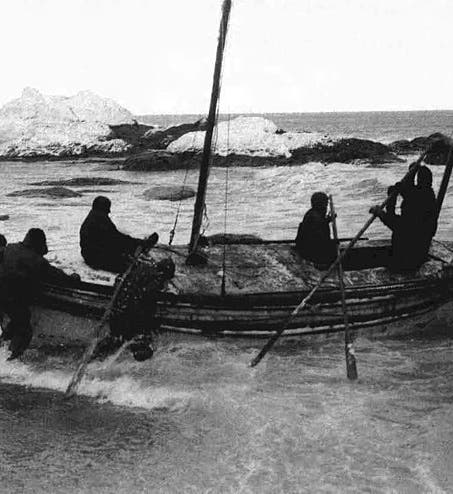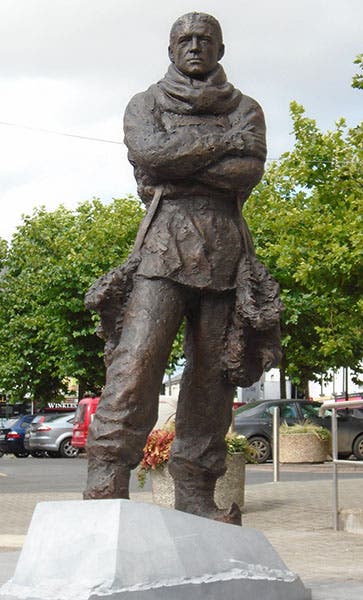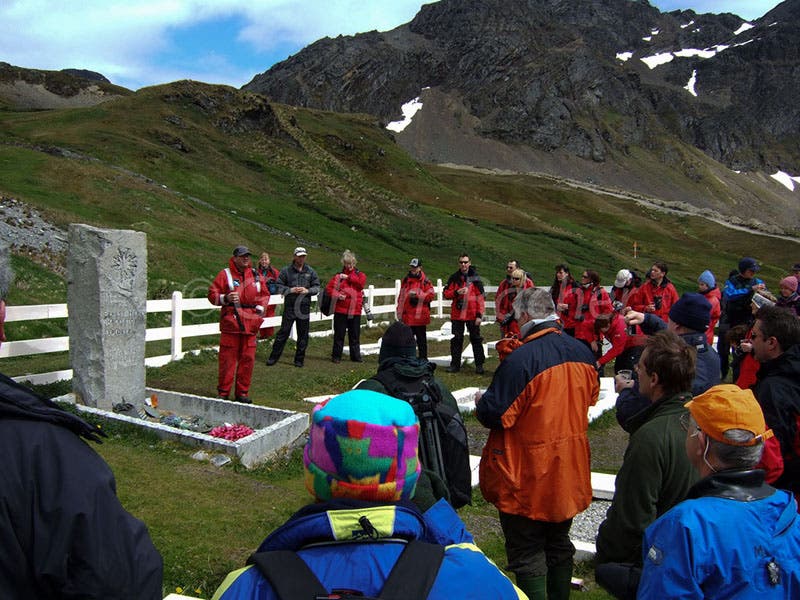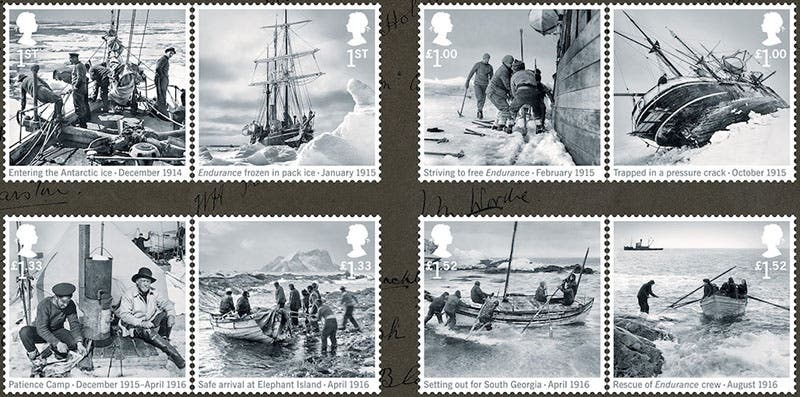Scientist of the Day - Ernest Shackleton
Ernest Shackleton, an Irish/English polar explorer, was born Feb. 15, 1874. In 1916, Shackleton commanded a small crew of five on what has been called the most extraordinary small-boat voyage ever. After his ship the Endurance had been frozen into the pack ice near Antarctica in early 1915, they had drifted for a year before the ship was crushed and sank. In their small lifeboats, the crew of 28 ended up on Elephant Island, an inhospitable chunk of rock in the Antarctic Ocean. With no hope of rescue there, Shackleton beefed up one of the lifeboats, the James Caird (second image), selected five of his most stalwart men, and set off for South Georgia Island, more than 900 miles away, in the worst seas and weather imaginable. It was Apr. 24, 1916 (first image).

James Caird, glass plate photograph by Frank Hurley, 1916 (James Caird Society)
Using only dead reckoning and a few sextant sightings of the sun when it chanced to appear, they arrived 16 days later at their destination. But their troubles were not over. They had landed on the south, uninhabited side of the island, and the whaling station was on the other side. With no hope of sailing around in the battered James Caird, Shackleton and two others hiked over the central mountains – a region that had never even been traversed before – for 36 straight hours before stumbling into the Stromness station on May 20, 1916. The whalers there wept at the sight of these scarecrows coming down from the mountains – men whom they had last seen, hale and fit, when the Endurance departed for Antarctica almost two years earlier.
By August, the rest of the crew on Elephant Island was rescued. Not a man was lost on this most legendary of Antarctic encounters. Shackleton died less than six years later, while preparing for another expedition, and is buried, fittingly, on South Georgia island. His grave is a necessary pilgrimage site for most who count themselves Antarctic explorers (fourth image)
There is an older statue of Shackleton standing in a niche outside the Royal Geographical Society building in London, and a much more recent one, unveiled in his home town of Athy, Ireland, in 2016 (fifth image)
Also in 2016, the Royal Mail issued a series of eight stamps, commemorating Shackleton and the voyages of the Endurance and the James Caird (sixth image). All of the images on the stamps reproduce glass plate photographs taken by the Endurance photographer, Frank Hurley.
Dr. William B. Ashworth, Jr., Consultant for the History of Science, Linda Hall Library and Associate Professor, Department of History, University of Missouri-Kansas City. Comments or corrections are welcome; please direct to ashworthw@umkc.edu.










